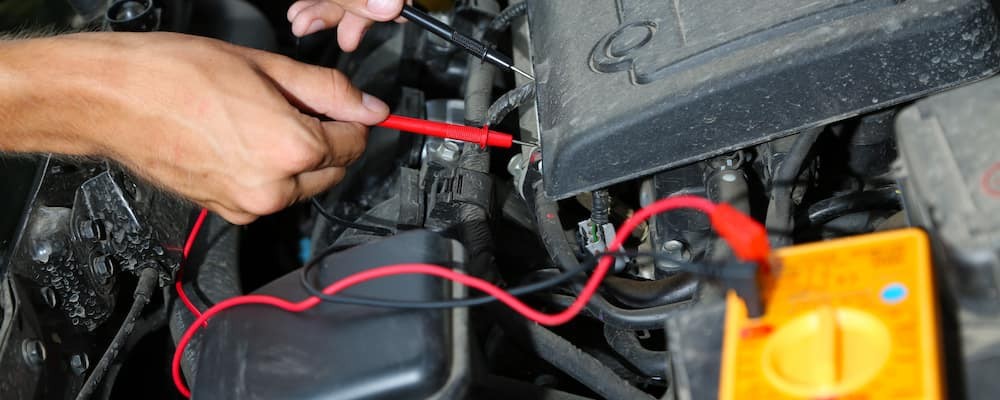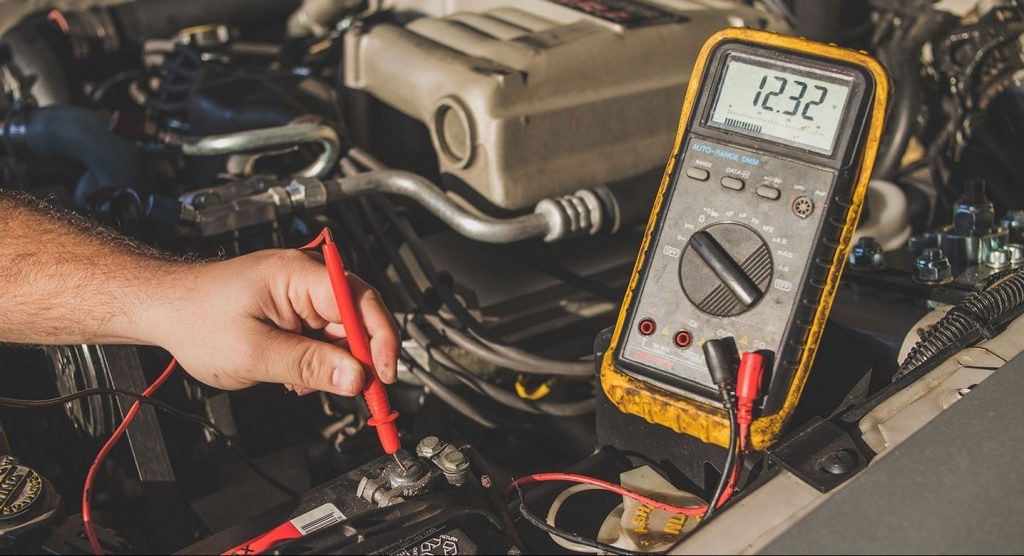How to test alternator with multimeter?
When there is an issue with the electronic devices in the vehicle, the things that come to our mind are the battery and the alternator. The battery produces a direct current that moves electricity from the battery to the car. And the alternator produces an alternating type of current. It is actually the type of electricity that we have in our residence. These two things in the automobile are very essential to generate electricity to the different electrical parts including the lights, horn, entertainment system, and instrument panel.
The alternator converts the car engine's mechanical energy into electrical energy to recharge the battery and to run the electrical devices. When you experience an issue with the devices like the headlights or horn, you should check the condition of the alternator and the best way to check it with a multimeter or a voltmeter, Today in this article, I am going to tell you how to test alternator with multimeter or other devices.
Testing the alternator is essential
The alternator is a critical part of a modern vehicle's electrical and charging system. It recharges the battery when required so that it can work efficiently. It plays an important role to run the electrical devices. Many of us have already faced a difficult situation with dimmer headlights which was one of the worst situations at nighttime driving. Sometimes, we don't get enough power to the air conditioning unit or car's cabin heater. We can also face a problem with the entertainment system because of the unusual condition of the alternator.
So, you should check the alternator on a regular basis. It will make you confident that it can generate sufficient voltage to recharge the battery and operate the different electrical devices of the car to avoid unusual incidents.
How to test the car battery with a multimeter
It is also essential to test the car battery. A good car battery should register about 12.6 Volts. The multimeter will measure DC voltage, indicated with a solid line and a dashed line above a letter V. If you set the dial to 20, you will get accurate measurement between 0-20 Volts.
You will get terminals marked with + and -, and often color-coded red for positive and black for negative. Touch the red probe to the positive and black to the negative terminals. You will be able to understand whether you are right or wrong by reading. If there is a reading with a minus (-12.6 rather than 12.6), that means you have got the probes the wrong way round.

I have told you earlier that the ideal voltage of the car battery should not be lower than 12.6 V. When it goes down to 12.2 V, it is 50% charged, and below 12 V, we can call it discharged. If you experience the battery with less than 12.6 V charge, you should disconnect the battery and fully charge it. If it holds a charge when it is not connected to the car, something is draining the battery far faster than the computer memory and digital clock.
How to test alternator with multimeter
The alternator works to produce electricity and charge the battery. Before testing the alternator, be sure that the car battery is fully charged. Put the negative lead of the multimeter to the negative post and the positive lead to the positive post of the battery. Set the meter to DC voltage using the 20 scale and read the display to ensure that the battery is fully charged. If you see around 12.6 V, it is fully charged. Now, start up the car and see what the alternator is producing. The display should now read one volt over the initial reading and if it remains the same or around 12.6 V, the alternator is not producing any electricity. You can check the alternator whether it is weak or not by turning on the lights and heater blower. Let the car run for a while. If you can see reading more than 14 V and it holds the same for a while, the alternator is fine.
If you don't have a multimeter to test the alternator
In this situation, the best way to do it with a voltmeter. Though it is not a multi-purpose instrument, you can use it to do this job properly. The steps to follow-

- At first, make sure that the battery is fully charged. If it is not, then you will not be able to check the alternator. If you try, it will be a wastage of time.
- After experiencing the battery, connect it with the voltmeter. Connect the red lead to the battery terminal on the positive (+) side, and black lead to the negative (-) side. You should be very careful so that your skin won't come in contact with the battery. Check the voltmeter and the reading should be more than 12.2 V. If it is 12.6, then it is the best to perform testing. Otherwise, you will have to charge it first.
- Now start the engine and get the alternator into maximum activity by running at 2000 RPM. When the engine is in full gear, the battery will be getting powered up, and the alternator will get some voltage from the regulator.
- It's time to retest now. Take a look at the voltmeter. If the RPM is causing a fluctuation from 13 and 14.5, it means the alternator is okay.
Both the multimeter and the voltmeter are the most popular tool to do this job. The voltmeter is reasonable while the multimeter is a little bit pricey. But my recommendation for you to buy a multimeter because you can use it for multipurpose. It can be a great alternative for the voltmeter but the voltmeter can't.
You may read
Conclusion
When there is an issue with the electronic devices in the vehicle, the things that come to our mind are the battery and the alternator. The battery produces a direct current that moves electricity from the battery to the car. And the alternator produces an alternating type of current. It is actually the type of electricity that we have in our residence. These two things in the automobile are very essential to generate electricity to the different electrical parts including the lights, horn, entertainment system, and instrument panel.
The alternator converts the car engine's mechanical energy into electrical energy to recharge the battery and to run the electrical devices. When you experience an issue with the devices like the headlights or horn, you should check the condition of the alternator and the best way to check it with a multimeter or a voltmeter, Today in this article, I am going to tell you how to test alternator with multimeter or other devices.
Testing the alternator is essential
The alternator is a critical part of a modern vehicle's electrical and charging system. It recharges the battery when required so that it can work efficiently. It plays an important role to run the electrical devices. Many of us have already faced a difficult situation with dimmer headlights which was one of the worst situations at nighttime driving. Sometimes, we don't get enough power to the air conditioning unit or car's cabin heater. We can also face a problem with the entertainment system because of the unusual condition of the alternator.
So, you should check the alternator on a regular basis. It will make you confident that it can generate sufficient voltage to recharge the battery and operate the different electrical devices of the car to avoid unusual incidents.
How to test the car battery with a multimeter
It is also essential to test the car battery. A good car battery should register about 12.6 Volts. The multimeter will measure DC voltage, indicated with a solid line and a dashed line above a letter V. If you set the dial to 20, you will get accurate measurement between 0-20 Volts.
You will get terminals marked with + and -, and often color-coded red for positive and black for negative. Touch the red probe to the positive and black to the negative terminals. You will be able to understand whether you are right or wrong by reading. If there is a reading with a minus (-12.6 rather than 12.6), that means you have got the probes the wrong way round.

I have told you earlier that the ideal voltage of the car battery should not be lower than 12.6 V. When it goes down to 12.2 V, it is 50% charged, and below 12 V, we can call it discharged. If you experience the battery with less than 12.6 V charge, you should disconnect the battery and fully charge it. If it holds a charge when it is not connected to the car, something is draining the battery far faster than the computer memory and digital clock.
How to test alternator with multimeter
The alternator works to produce electricity and charge the battery. Before testing the alternator, be sure that the car battery is fully charged. Put the negative lead of the multimeter to the negative post and the positive lead to the positive post of the battery. Set the meter to DC voltage using the 20 scale and read the display to ensure that the battery is fully charged. If you see around 12.6 V, it is fully charged. Now, start up the car and see what the alternator is producing. The display should now read one volt over the initial reading and if it remains the same or around 12.6 V, the alternator is not producing any electricity. You can check the alternator whether it is weak or not by turning on the lights and heater blower. Let the car run for a while. If you can see reading more than 14 V and it holds the same for a while, the alternator is fine.
If you don't have a multimeter to test the alternator
In this situation, the best way to do it with a voltmeter. Though it is not a multi-purpose instrument, you can use it to do this job properly. The steps to follow-

- At first, make sure that the battery is fully charged. If it is not, then you will not be able to check the alternator. If you try, it will be a wastage of time.
- After experiencing the battery, connect it with the voltmeter. Connect the red lead to the battery terminal on the positive (+) side, and black lead to the negative (-) side. You should be very careful so that your skin won't come in contact with the battery. Check the voltmeter and the reading should be more than 12.2 V. If it is 12.6, then it is the best to perform testing. Otherwise, you will have to charge it first.
- Now start the engine and get the alternator into maximum activity by running at 2000 RPM. When the engine is in full gear, the battery will be getting powered up, and the alternator will get some voltage from the regulator.
- It's time to retest now. Take a look at the voltmeter. If the RPM is causing a fluctuation from 13 and 14.5, it means the alternator is okay.
Both the multimeter and the voltmeter are the most popular tool to do this job. The voltmeter is reasonable while the multimeter is a little bit pricey. But my recommendation for you to buy a multimeter because you can use it for multipurpose. It can be a great alternative for the voltmeter but the voltmeter can't.
You may read



